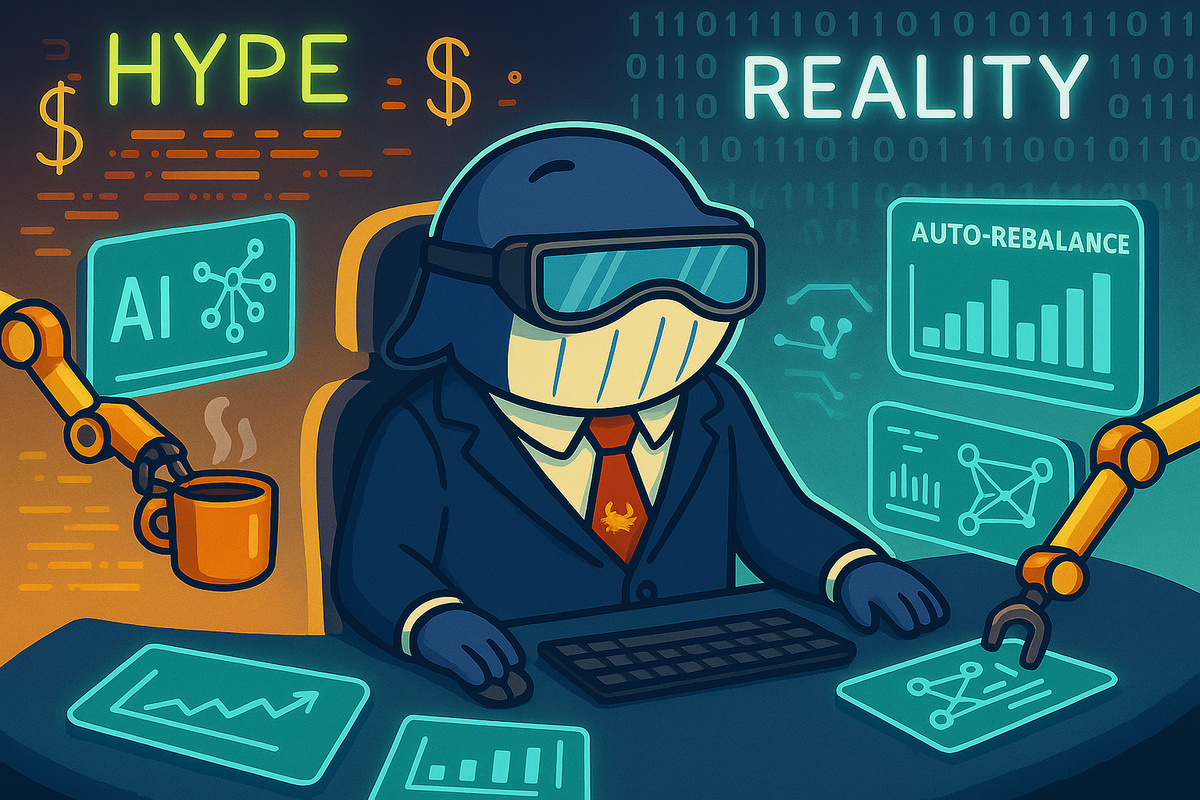AI-Powered Investing: Tools, Hype, and Reality

Artificial Intelligence has moved from buzzword to baseline — and investing is no exception. From robo-advisors to predictive analytics and auto-generated portfolios, the world of AI-powered investing is expanding fast.
But where’s the real value? What’s just noise? And how can retail and pro investors use AI intelligently — without getting swept up in the hype?
Let’s break it down.
1. The Tools: Where AI Actually Helps
AI in investing isn’t magic — it’s math, at scale. Here are key use cases that already provide tangible value:
Robo-advisors
Platforms like Wealthfront and Betterment use algorithms to automatically allocate and rebalance portfolios based on your risk profile. They’re not revolutionary anymore — they’re reliable.
AI stock screeners & analytics
Tools like FinGPT, Koyfin, and even ChatGPT can analyze earnings reports, detect anomalies in sentiment, and summarize financial trends faster than humans. This helps investors cut through the clutter.
Algorithmic trading
Used heavily by institutions, AI models can detect micro-patterns and place trades in milliseconds. While out of reach for most retail traders, these systems shape the liquidity and volatility of modern markets.
Natural language processing (NLP)
Models trained to scan news, earnings calls, or tweets can flag risks or opportunities early — especially in volatile markets.
2. The Hype: What AI Can’t (Yet) Do
Let’s be clear: AI doesn’t “understand” markets the way humans do. And it definitely can’t see the future.
Here’s where the hype goes too far:
- “AI will pick all your stocks.”
Not exactly. AI models can identify patterns, but markets are adaptive — as soon as a strategy becomes popular, its edge erodes. - “AI replaces human judgment.”
Not in investing. Emotional cycles, macro shifts, and geopolitical events don’t follow scripts. AI can assist, but not replace, experience or intuition. - “Plug in AI = automatic profit.”
It’s not a cheat code. Without clear strategy, risk controls, and understanding of what the model is doing — it’s gambling, not investing.
3. The Reality: How to Use AI Without Losing Your Mind (or Money)
Here’s how smart investors — whales and dolphins alike — are starting to use AI as a tool, not a savior:
1) Use AI to filter, not decide.
Let it scan earnings reports or flag outliers. Then you apply judgment.
2) Automate the boring, not the core.
Rebalancing? Great. Entry/exit decisions? That’s still your job.
3) Know the model’s limits.
Understand how a tool was trained, what data it uses, and what assumptions it makes. Black boxes are dangerous.
4) Watch your biases — AI reflects them.
If a model is trained on biased data, it’ll reinforce the same mistakes you’re trying to avoid.
5) Don’t over-optimize.
Trying to fine-tune an AI model to catch every wiggle in the market often leads to overfitting — and underperformance.
🐋 Whales Investing Perspective
The future of investing will absolutely be influenced by AI — but it won’t be defined by it.
The best investors will use AI to enhance their edge, not replace their thinking. They’ll embrace speed and scale — without surrendering strategy or skepticism.
In short: Use AI as your co-pilot, not your captain.
Final Thought
If you’re curious about using AI in your investment process, start small:
- Try AI tools to summarize earnings calls
- Use natural language models to test sentiment shifts
- Build watchlists with AI-powered filters — and test them manually
- And most importantly: track what works, and why.
AI is just a tool. You are still the investor.
— Whales Investing🐋
